Along with Baltimore Orioles, hummingbirds are a favorite summertime visitor at my bird feeding station. These tiny birds bring a ton of energy – they can beat their wings 50+ times a second – and are tame around people. They’re one of the few birds that will stop by a feeder when I’m sitting outside next to it. It’s also easy to attract hummingbirds (a lot of them) to a feeder in just a few steps!
If you live in the Central or Eastern United States, you’ll be attracting the Ruby-Throated Hummingbird. These are what I get in Minnesota. The Western United States has more variety (lucky you), with Anna’s, Rufous and Black-Chinned Hummingbirds, to name a few. Scroll below for a photo guide of each of these hummingbirds and their range.
These tips below should apply to attracting all of the hummingbird species I mentioned.
Disclaimer: Some links found on this page might be affiliate links. If you click an affiliate link and make a purchase, I might earn a commission. As an Amazon Associate I earn from qualifying purchases.
1. Attract Hummingbirds With Tubular Flowers
I’ll let you in on a little secret…I didn’t even need to buy a feeder to attract hummingbirds during my first year of feeding the birds. All I needed to do was put up a hanging plant on our patio from the local farmers market that had a variety of native flowers, including tubular flowers. A few weeks later, we had a few hummingbirds visiting the patio regularly.
Planting or hanging flowers, especially tubular flowers is my top tip for you. Some options that Ruby-Throated Hummingbirds like are cardinals flowers or bergamot. Planting native plants and flowers also has the added benefit of drawing in more birds and pollinators to your yard in general.
So, find yourself a hanging plant and put it someplace in your yard or balcony where you have some shade and shelter available. Step one complete!

Related: How to Start Bird Feeding in Just Two Steps
2. Buy a Specific Feeder to Attract Hummingbirds
If you want to draw in more hummingbirds regularly, you’ll want to buy a feeder specifically made for them to hold nectar. Hummingbirds are attracted to bright colors, especially red or yellow! Most feeders will have one of those colors front and center. You can get a plastic or glass feeder option. You can usually find hummingbird feeders at local hardware stores, home retailers, and bird feeding hobby stories. Here’s a link to hummingbird feeders on Amazon. If you’re curious, this is the glass hummingbird feeder I’m using below.

You can also attract two birds with one stone by purchasing a Baltimore Oriole feeder with nectar ports. This should also draw in hummingbirds. I’m trying this approach this upcoming summer and will report back my results. This is the feeder I’ll be using below.

Once you get your feeder, get ready to hang it next to your potted plant with tubular flowers to create a hummingbird paradise, but not before you fill your feeder with their favorite food!
3. How to Make Your Own Hummingbird Food
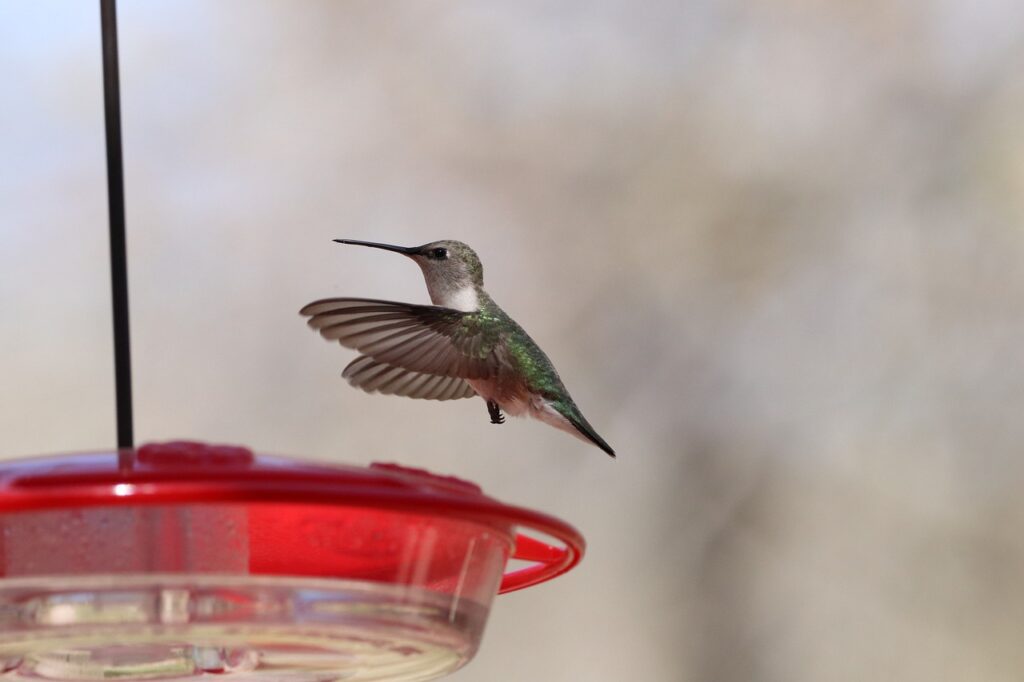
It’s easy to make your own hummingbird nectar right from home. Mix one part table sugar with four parts water. For example, mix 1/4 a cup of sugar with one cup of water. You can boil the water ahead of time, but it’s not necessary. Only use white table sugar for hummingbird nectar. Other sugar options like brown sugar and honey are a big no-no and can cause hummingbirds to choke. Oh and don’t dye the nectar red.
Here’s a video of my showing how to make it below. I usually prep a bunch of nectar all at once on Sunday and store it in the fridge for refilling my feeders throughout the week.
You can also buy pre-made hummingbird nectar if you’re short on time! This Kaytee Hummingbird Electronectar has rave reviews on Amazon.
4. Clean Your Feeders to Keep Hummingbirds Safe and Coming Back
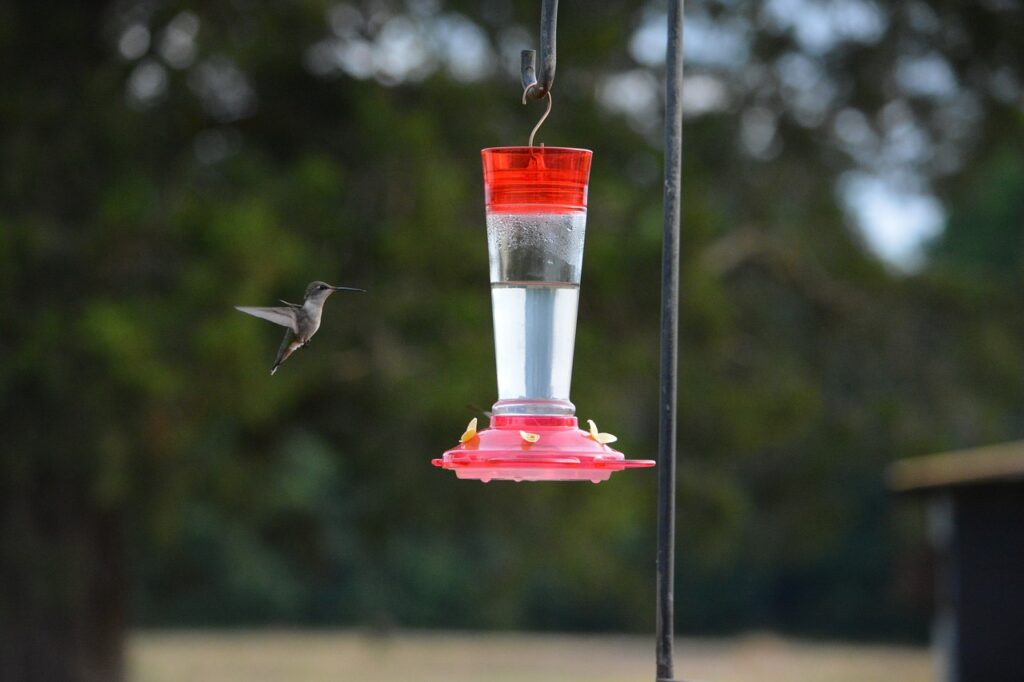
You absolutely must completely clean out your hummingbird feeders every other day at minimum. Clean them every day if it’s hot outside or if the feeders are in direct sunlight. The nectar easily starts growing bacteria and mold. This can harm or kill the hummingbird if you aren’t diligent.
Anecdotally, I’ve also noticed that hummingbirds will come back much more often if you keep your feeders clean and the nectar in them fresh. I personally clean my hummingbird feeder every other day and put in fresh nectar that I store in the refrigerator.
Here’s how to clean a hummingbird feeder:
- Empty any leftover nectar
- Disassemble your hummingbird feeder
- Clean and scrub the feeder with a mild dish soap
- Rinse thoroughly
- Allow to air dry
5. Have Multiple Feeders in Your Yard, But Spread Them Out
Want to draw in even more hummingbirds? Go ahead and set up several feeding stations spaced out in a yard. Hummingbirds are territorial, so it’s better to spread out your feeders across your yard versus grouping them. Give them space! A lot of people report success with having a hummingbird feeder in their front and back yard.
6. Hang Hummingbird Feeders in the Same Space Each Year
Hummingbirds are much more likely to return to your yard year after year if you continue hanging their nectar feeders in the same spots. Chances are they’ll keep coming back.
7. Add a Bird Bath with Moving Water to Attract Hummingbirds
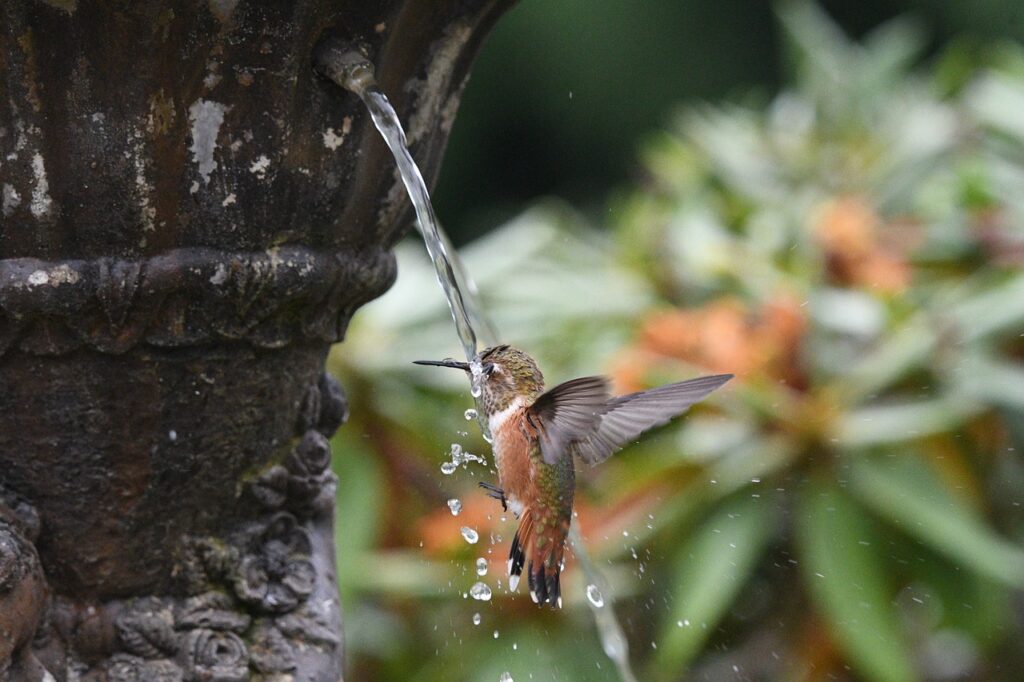
A surefire way to bring more birds to your yard is to add a water feature and hummingbirds are no different. They love water and need it to clean their feathers.
The trick with hummingbirds is to draw them in with a water feature like a mister in a bird bath or a fountain. Most bird baths are too deep for hummingbirds to use, but they love flying around and playing with water!
8. Keep Your Hummingbird Feeders Out Until Fall
Many hummingbirds will stay in their migration area until the late summer and into the fall. It’s worth leaving your feeder out for a few weeks even after your last hummingbird leaves, just in case you can help any late migrants. I usually leave my feeders out in Mid-October here in Minnesota.
Note: Leaving a hummingbird feeder up in the fall won’t lead to hummingbirds forgoing their migration. Day length is what triggers their migration, not the nectar you provide. You’ll just be helping supply the remaining hummingbirds with vital energy before they make their trip south.
9. Help Hummingbird Nests by Leaving Spiderwebs in Your Yard
This is a fun tip I learned about recently. If you can stand to leave spider webs in your yard or on your property, hummingbirds love using their material for their nests (image below). They will also eat small spiders from time to time. I knew I had another reason to love hummingbirds.
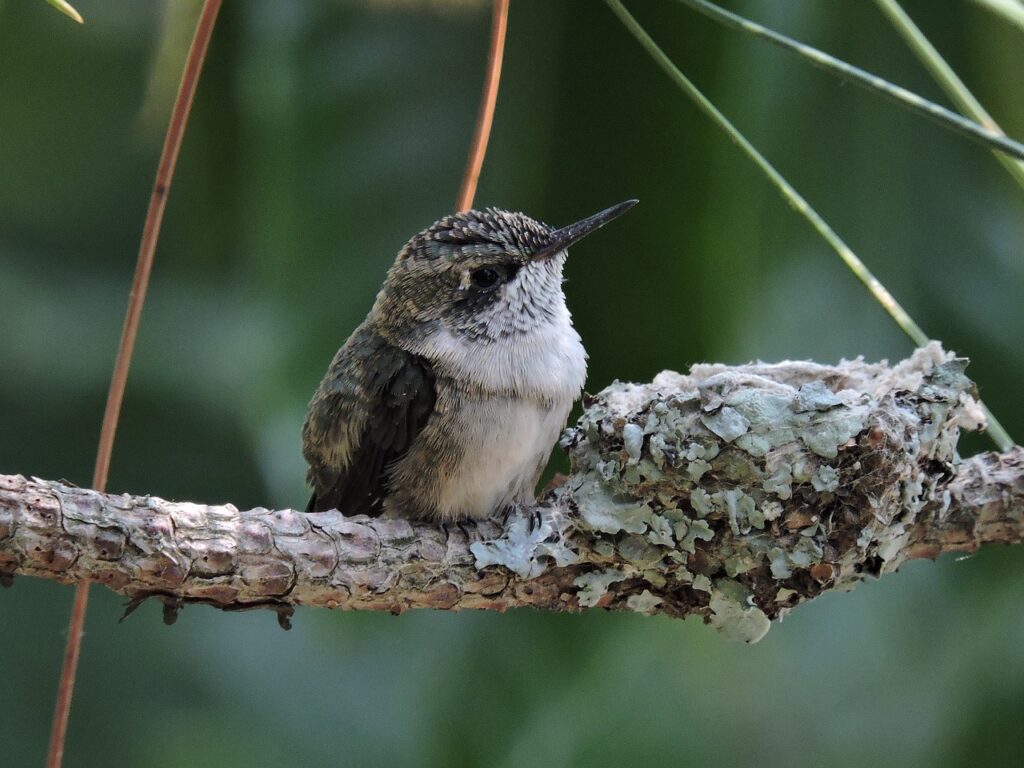
10. Hummingbirds are Drawn to the Color Red
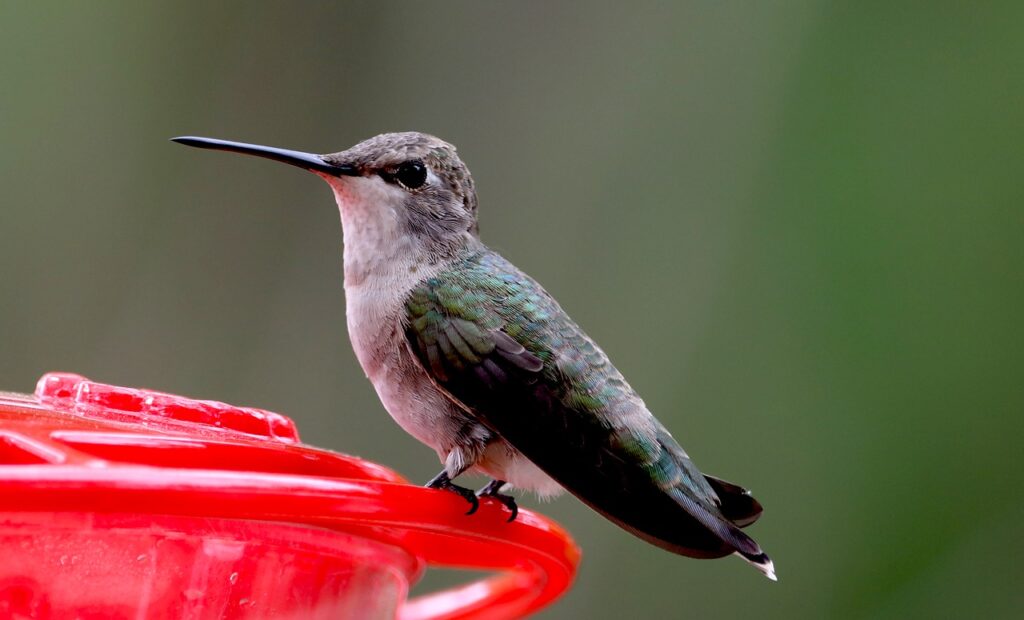
Hummingbirds love the color red and will be naturally attracted to any feeder prominently featuring the color. You can also plant red native plants in your yard to increase your odds. Some people also have success hanging red ribbons in their yard on trees!
11. Prevent Bees and Ants at Your Hummingbird Feeder
Putting nectar out for hummingbirds often results in ants and bees also showing up. TO help prevent bees, you can invest in a feeder that has a built in bee guard/filter over the feeding ports to keep them out of the nectar. Hummingbirds will still be able to get the nectar easily with their long bill and tongues.
You should also make sure your hummingbird feeders are clean and aren’t leaking to prevent easy access to your nectar for the bees.
To prevent ants, you can invest in an ant moat for your feeder. These are structures you can hang above your hummingbird feeder to block ants from reaching the nectar in your feeder!
Common Hummingbird Photo Guide
Ruby Throated Hummingbird
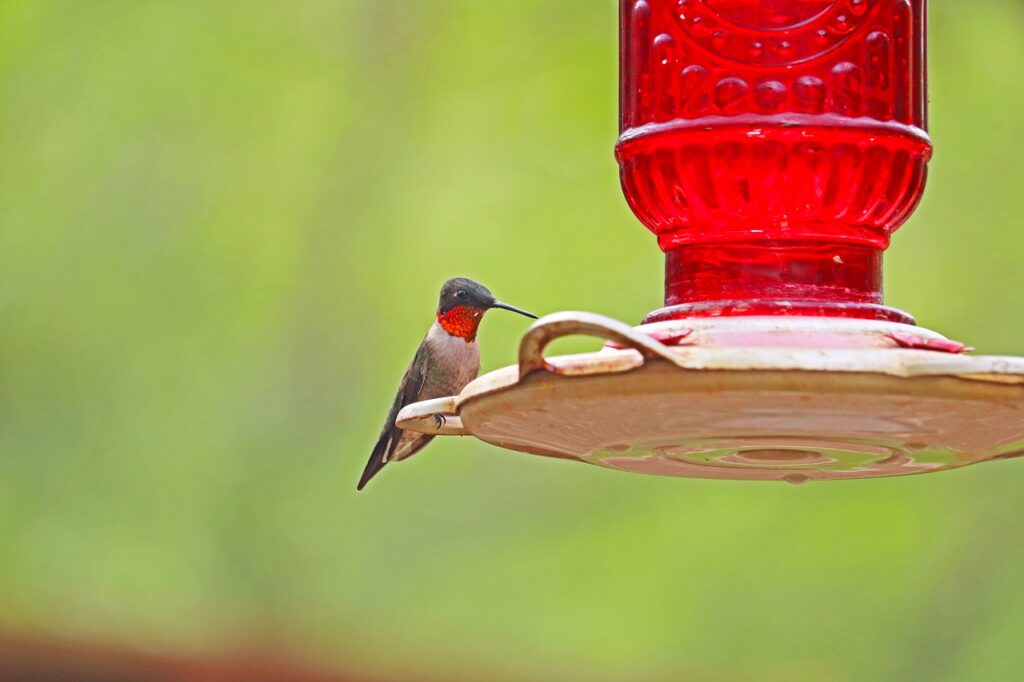
The Ruby-Throated Hummingbird is the only species you’ll commonly see in the Eastern United States. They migrate to Central America in the Fall (range map below). They beat their wings about 53 times a second, according to the Cornell Bird Lab.

Yellow – migration
Blue – nonbreading
Source: Cornell Bird Lab
Anna’s Hummingbird
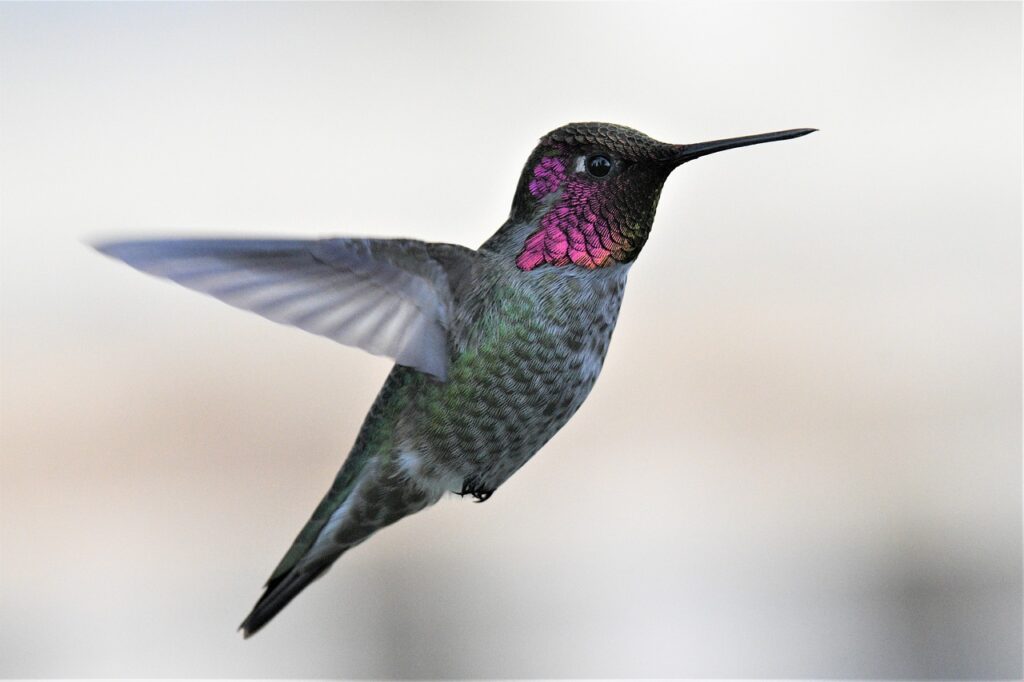
Anna’s Hummingbirds are common along the Pacific coast and into Arizona and New Mexico. During their courtship display, males will fly high into the air and swoop down to impress females.
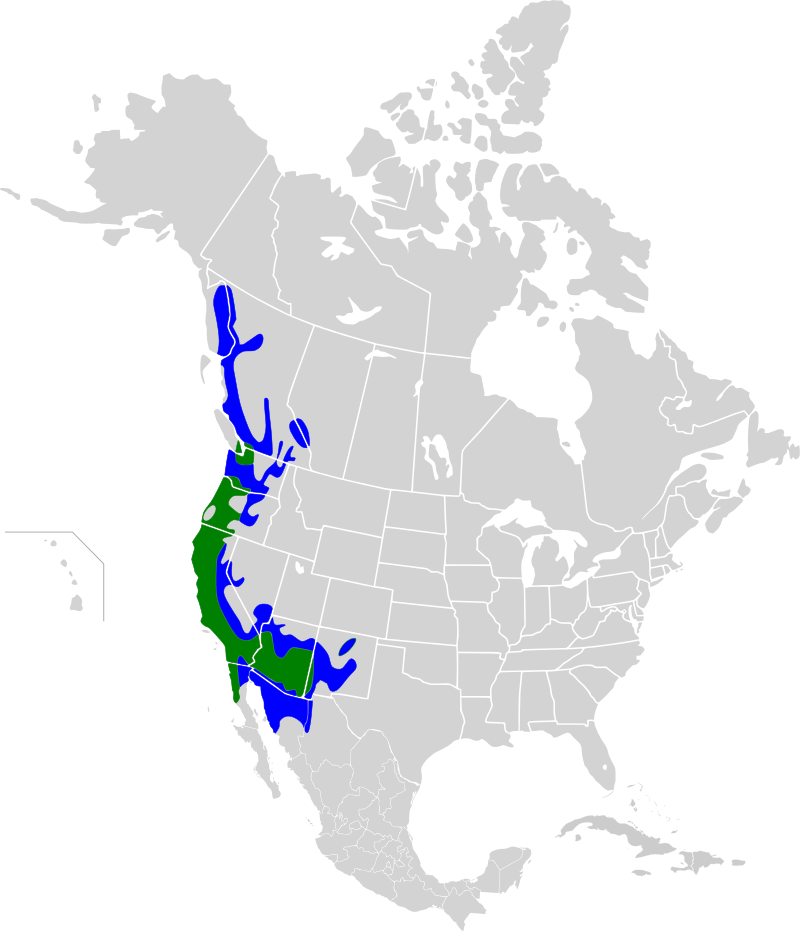
Blue – breeding and wintering range
Rufous Hummingbird
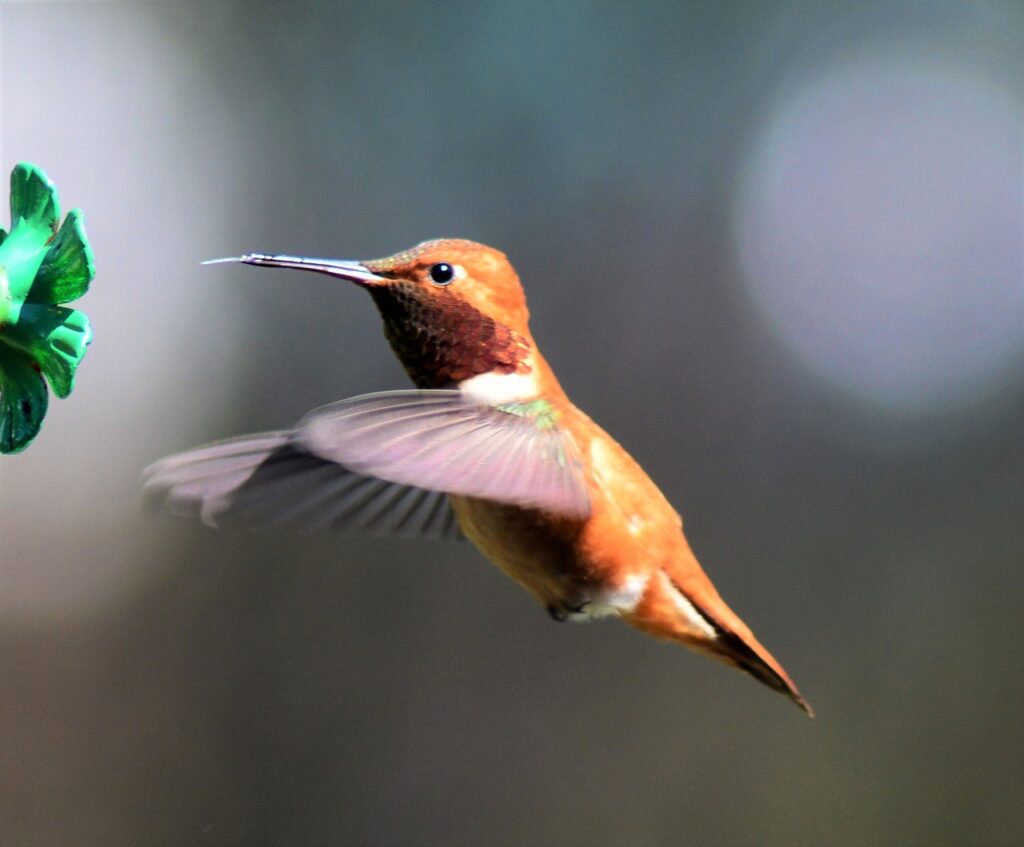
Check out that orange color! Rufous Hummingbirds are wide-ranging on the west coast and breed further north than most hummingbirds. They are common visitors at hummingbird feeders but can be very territorial in the mating season and will chase other hummingbirds away.
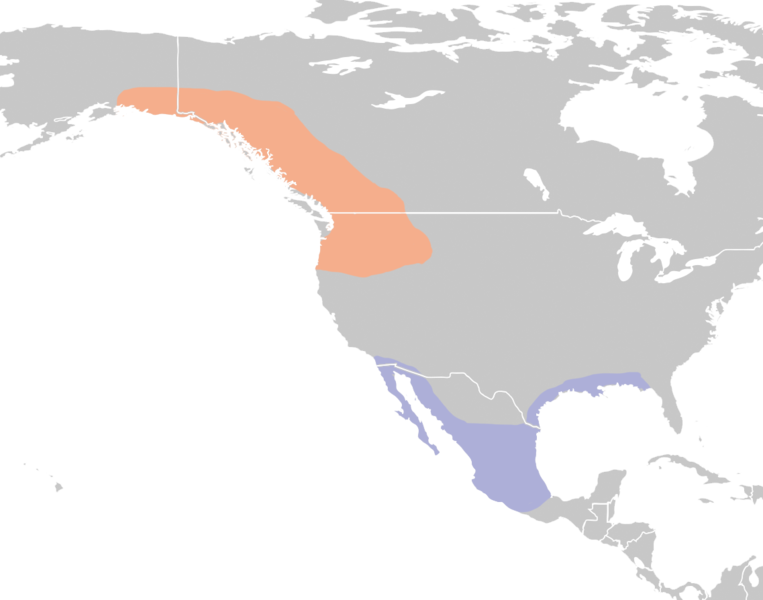
Blue – winter range
Black-Chinned Hummingbird
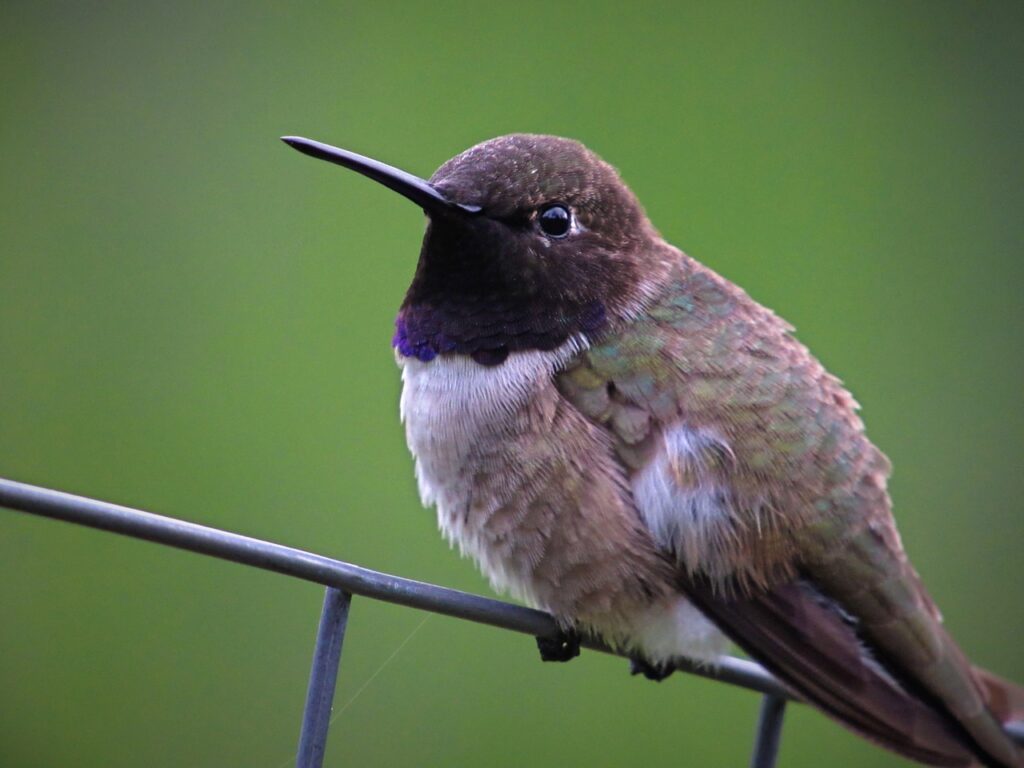
The Black-Chinned Hummingbird has a slight bit of purple under it’s black chin. Common across a lot of the western United States. They’re adaptable! You can find them anywhere from deserts to urban areas.
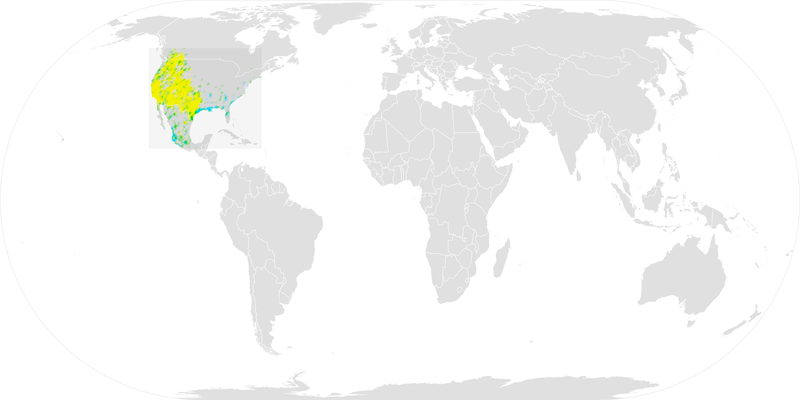
Green – year-round range
Blue – winter range
I hope this guide helps you attract a ton of hummingbirds. Did these approaches work for you? Do you have questions? Drop a comment below!

Pingback:More Millennials and Gen-Zs Should Try Bird Feeding - BIRD BITES
Pingback:The 10 Highest Rated Amazon Baltimore Oriole Feeders - BIRD BITES
Pingback:11 Awesome Hummingbird Feeders You Can Buy on Amazon - BIRD BITES
Pingback:How to Start Bird Feeding in Just Five Steps - BIRD BITES
Pingback:My Review of Hummingbird Concentrate – Nectar Defender - BIRD BITES
Pingback:8 Famous People and Their Favorite Birds - BIRD BITES
Pingback:Beyond Hummingbirds: 4 Other Birds That Drink Nectar - BIRD BITES
Pingback:7 Birds That Eat Mosquitoes (and How to Bring Them to Your Yard) - BIRD BITES
Pingback:5 of the Best Large Bird Feeders Money Can Buy - BIRD BITES